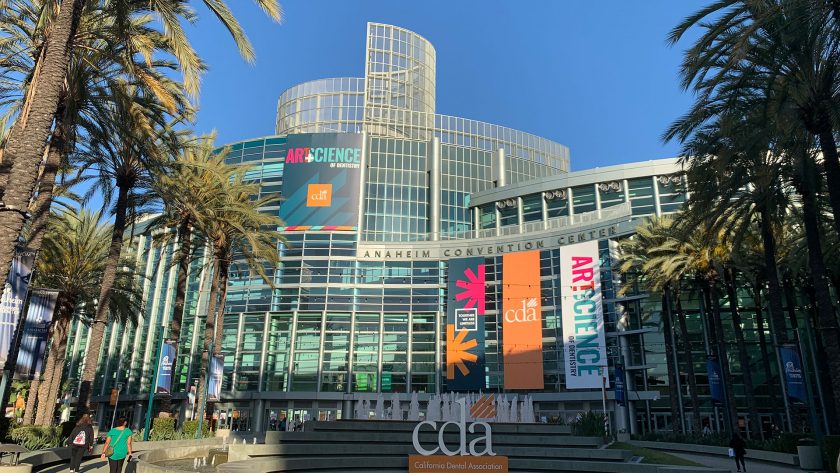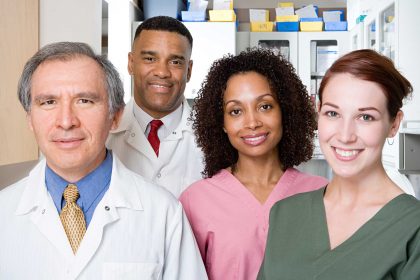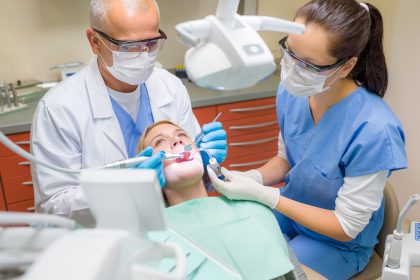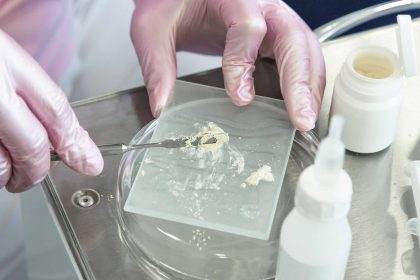The California Dental Association just held one of the biggest conferences of the year for dental professionals. It’s one of the most important meetings because it brings together leaders from all across the country who are willing to share their experiences, expertise, and recommendations. Dental conferences also give us the opportunity to interact with one another, and take what we learn back to our own practices. Here are my top five takeaways from this year’s event.
What is the best way to get patient reviews online?
The answer is simple: ask for “feedback” … and I’ll tell you why that’s in quotes in just a bit.
I was fortunate to get a seat for the popular and extremely crowded presentation by the engaging Dr. Len Tau (The Reviews Doctor), who had a lot of great information about online practice reviews. According to Tau, 85% of people trust reviews as much as they trust personal recommendations, 97% of consumers read online reviews to find a local business, and positive reviews make 73% of consumers trust a local business more.
“Your online reputation and reviews can make or break your practice,” Tau explains, “and reviews give credibility and create trust.”
It’s a numbers game when it comes to reviews, so you have to get as many reviews as possible to keep new patients flowing into your practice. You’ve probably been asking for reviews for years and patients still fail when it comes to leaving a Google online review. Tau recommends that you ask for “feedback” instead of a “review,” as the thought of writing a review can be intimidating for many patients.
Another Tau tip is to use management software that makes it easy for patients to leave a rating, so basically, as soon as your patient walks out that door, they receive an automated text from your practice with a link that allows them to click up to a five-star rating if they want to. Make it easy for them to tell the world how highly awesome your practice is!
Can dentists in California force a patient to have radiographs?
You betcha. This is your practice, so it’s your way or the highway. Dental radiographs are considered diagnostic, so not only can you require radiographs, but you should! Having a patient sign a form stating that they willingly refuse radiographs won’t give you the protection you need, as no patient can provide consent for the dentist to be negligent.
This was one of the most important points made in the California Dental Practice Act course, led this year by Nancy Dewhirst, RDH and educator extraordinaire—who did a great job keeping everyone awake in this traditionally sleepy early morning session.
Dewhirst indicated that indeed a patient could report you for requiring x-rays, but that if they did, you would win the case. Dental radiographs are standard of practice for assessment and treatment—and it’s the law!
So do what you can to eliminate the “overdue for x-rays” on patient schedule notes. If the patient refuses x-rays, refuse treatment to the patient.
Ms. Dewhirst also warns that if you have a patient who says they had x-rays taken by another dentist, it’s your legal responsibility to obtain those records. You could be held liable for any complications arising from missed diagnoses because you failed to follow up on verifying those x-rays.
Can you simply initial your chart entry in the state of California?
Yup. it’s perfectly legal to initial your entry in patient treatment records, but there’s a catch. If you or your auxiliary are only initialing entries, an identification number must also be indicated on the entry. Since patient charts are legal documents, it’s an ethical obligation to maintain accurate records, so signing the entry with your full signature is the best modus operandi. To make the note totally legit, you’re also required to date every entry. If you’re a chartless practice, meaning you use dental software for charting, you’ll have to create digital signatures for chart entry use.
Why are portable dental units so popular?
Portable dental units allow dentists and hygienists to set up practice anywhere in the world. These units are gaining popularity because they allow traveling dentists and mobile hygienists to treat the elderly, vulnerable, and underserved who might not otherwise have access to dental care.
I investigated a number of these units on the exhibitor floor at CDA, and all included the necessary dental equipment to make it easy for you to pull up to a retirement facility, inner-city elementary school, or remote village and practice your mad skills on patients who could really use your help. Built with ease-of-use in mind, all you have to do is plug the units in.
Portable dental units are basically small versions of air compressors that have many different instruments, hand pieces, and equipment hooked up to them for a stead supply of clean and compressed air and water so you can do your thang. Some units boast high air flow, which allows both the saliva ejector and HVE to be used simultaneously (WOOT!).
All of the units had a self-contained water system, autoclavable parts, and were lightweight. One booth in particular provided portable dental units to military bases throughout the country to ensure military personnel are deployable and mission ready.
Compact, inexpensive, lightweight, and gaining popularity—you have one question to answer: Where in the world are you going next?
Are you aware of the many volunteer opportunities available to dental professionals?
As I explored the aisles of booths and exhibitors at the convention, one thing stood out: dental professionals are good people! There were numerous non-profit organizations on the floor with ample opportunities for volunteerism, both here and abroad.
Volunteering your skills, time, and resources is a terrific way to make a difference, help others, and enhance your life. There are multiple benefits of volunteering and endless opportunities for experiences abroad and in your community. Contemporary social neuroscience research indicates that when people donate to charity, either financially or through volunteering, their mesolimbic system—the portion of the brain responsible for feelings of reward—is triggered. As a result, the brain releases feel-good chemicals, inspiring you to perform more acts of kindness—something psychologists call the “helper’s high.”
Whatever the scientific explanation, I love volunteering. Through dentistry I play an active role with the Santa Barbara Medical Reserve Corp, FEMA, and the Santa Barbara County Coroner’s Office (yuck, I know). I may even be heading to Bangladesh as a volunteer this spring!
My point is, whatever your interest, there’s an opportunity to give back and feel great about it. Get involved!
If you missed CDA Presents in Anaheim, you have another opportunity. The popular convention returns to San Francisco this autumn, so ink in September 8-10, 2022 and make arrangements to learn and connect with your dental community live at the Moscone Convention Center.




